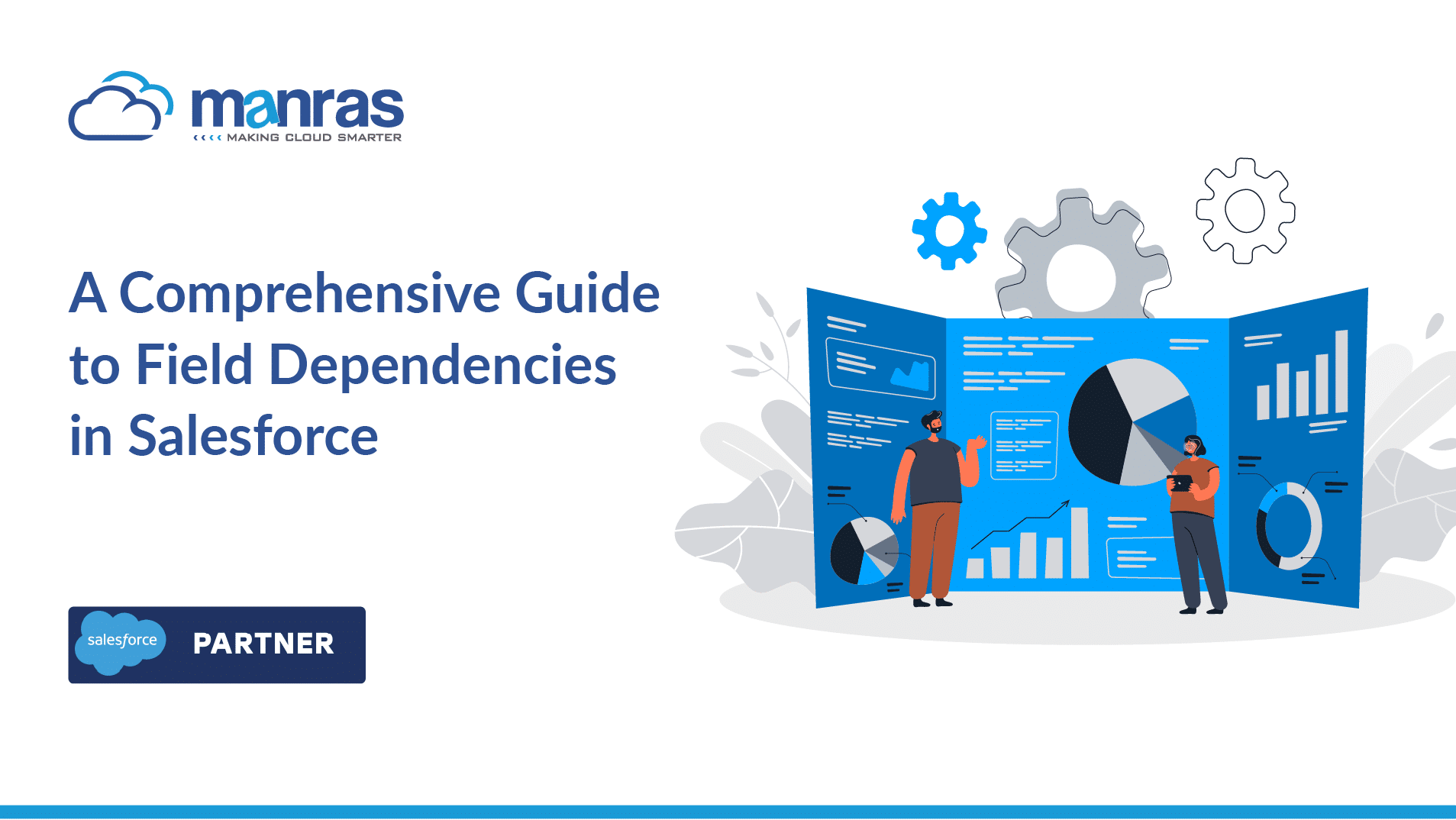
A Comprehensive Guide to Field Dependencies in Salesforce
Salesforce provides essential tools to optimize your processes and ensure seamless workflows. By leveraging these features, you can maintain accuracy across your data. In this article, we’ll discuss how to set up Salesforce field dependencies, implement Salesforce validation rules, and use Salesforce formula fields to enhance Salesforce data quality and ensure Salesforce data integrity across your organization.
Understanding Field Dependency
Field dependency in Salesforce is a feature that allows you to filter and display relevant options in one picklist based on the user’s selection in another picklist. It involves linking a controlling field and a dependent field, where the controlling field determines the values shown in the dependent field. This ensures Salesforce data integrity by preventing users from selecting irrelevant options, helping to maintain accurate and consistent data.
Benefits of Field Dependencies
Now that you know what Salesforce field dependencies are, here are some benefits that make them a valuable tool in Salesforce:
Cleaner and Consistent Data
Field dependencies ensure that users only see relevant options, making data entry more accurate and organized and simplifying reporting and analysis.
Streamlined Workflows
By hiding irrelevant choices, field dependencies reduce confusion, making complex workflows more straightforward to manage for users.
Better User Experience
With guided options, users can input data faster and with fewer mistakes, leading to a smoother and more efficient experience.
Versatility Across Objects
Field dependencies work with various objects in Salesforce, making them adaptable to different business needs without requiring extra validation rules.
Popular Use Cases
Apart from the benefits, let’s explore some popular use cases where field dependencies simplify workflows and enhance accuracy:
Region-Specific Choices
Field dependencies filter options based on geographical data for businesses operating across multiple locations. For example, when a user selects a country like “United States,” the dependent field will show only relevant states, ensuring accurate data entry. The State and Country Picklists feature for further standardization can also support this.
Product Selection
For companies with diverse product lines, field dependencies streamline the selection process. When a user selects a product category, such as “Electronics,” the dependent field will display only relevant products like “Smartphones” or “Laptops,” ensuring a smoother, more accurate choice.
Industry-Specific Fields
Field dependencies are also useful in industries with specialized requirements, like healthcare or manufacturing. For example, selecting “Surgery” in a hospital’s system could trigger a list of relevant equipment, ensuring users only see valid options.
How to Set Up Field Dependencies
Here are the key steps to set up field dependencies in Salesforce:
Ensure You Have the Right Permissions
Before setting up field dependencies, confirm that you have the “Customize Application” user permission. This permission allows you to define and edit dependent picklists, which is crucial for customizing field interactions in Salesforce.
Check the Fields Involved
Review the fields you want to use in your field dependency. The controlling field can be a standard or custom picklist, checkbox, or similar field type. The dependent field, however, must be a custom picklist. Ensure that both fields have all the necessary values to create the dependency.
Navigate to Field Dependencies
In Salesforce, go to Setup → Object Manager, and select the object (such as Case or Contact) where the field dependency will be created. From there, click on Fields & Relationships, and then select Field Dependencies to start the setup process.
Create a New Field Dependency
Click on the New button to create a new field dependency. Then, choose the controlling field and the dependent field from the dropdown lists and click Continue to move forward with configuring the dependency.
Set Up the Dependency Matrix
The dependency setup involves a matrix where you link values from the controlling field to the corresponding options in the dependent field. For each choice in the controlling field, select which values in the dependent field should be displayed. You can add or remove values by clicking on them and using the “Include” or “Exclude” buttons.
Preview the Dependency
After configuring your dependency, click Preview to see how the fields will behave. This step allows you to test and ensure that the dependent field displays only the appropriate options based on the controlling field’s selection.
Save Your Changes
Once you’re satisfied with how the field dependencies work, click Save to finalize the setup. This will lock in the changes and apply the dependency across your Salesforce system.
Best Practices for Managing Field Dependencies
While managing field dependencies, you must keep a few best practices in mind to ensure smooth operations:
Limit Values
Keep the number of values in your picklists manageable. Too many values can make managing dependencies difficult. Regularly check both active and inactive values to ensure they remain relevant.
Test Your Setup
Don’t rely only on the preview. Test your field dependencies in different scenarios to confirm they work correctly. This helps avoid any issues with incorrect data.
Consider Record Types
If you have multiple record types, make sure your dependencies align with each type. Ensure that both the controlling field and dependent picklist values fit the specific record type.
Be Careful When Modifying
When making changes to picklists, remember to adjust any dependencies as well. New values added to a picklist may need to be updated in the dependency setup to avoid errors.
Handle Reporting Challenges
Reporting on dependent and controlling fields isn’t straightforward, as they’re not visible in the Schema Builder. Look into alternative solutions or third-party apps to help manage this limitation.
Conclusion
In conclusion, Salesforce field dependencies are a powerful tool to streamline data entry and improve the user experience. By ensuring that users only see relevant options, they help maintain clean, consistent Salesforce data quality while simplifying workflows. With the right setup and ongoing management, field dependencies can save time, reduce errors, and improve overall productivity.
If you’re looking for expert assistance in setting up and managing Salesforce configurations, consider reaching out to Manras, a certified Salesforce consultant. With deep expertise in Salesforce solutions, Manras can help optimize your workflows and ensure your Salesforce environment is tailored to your business needs.



